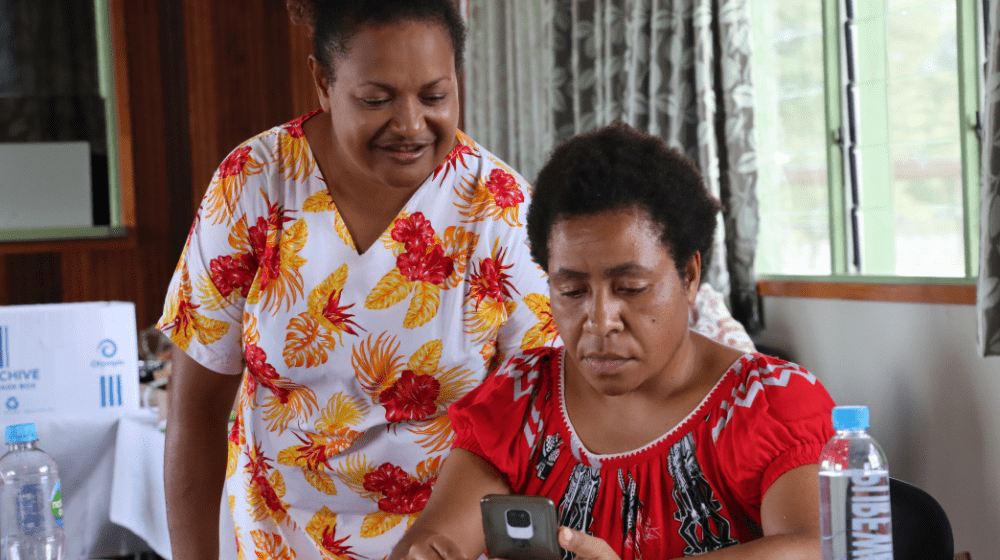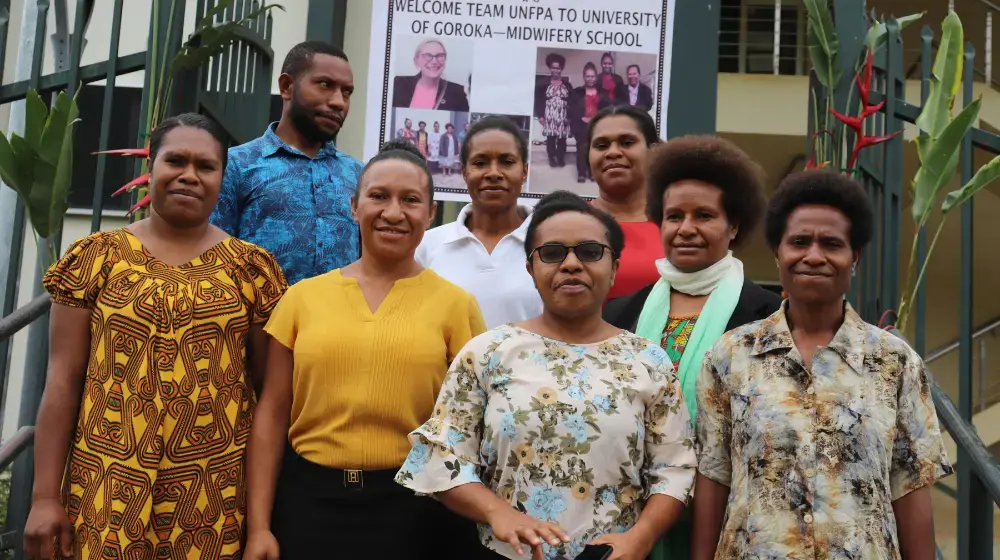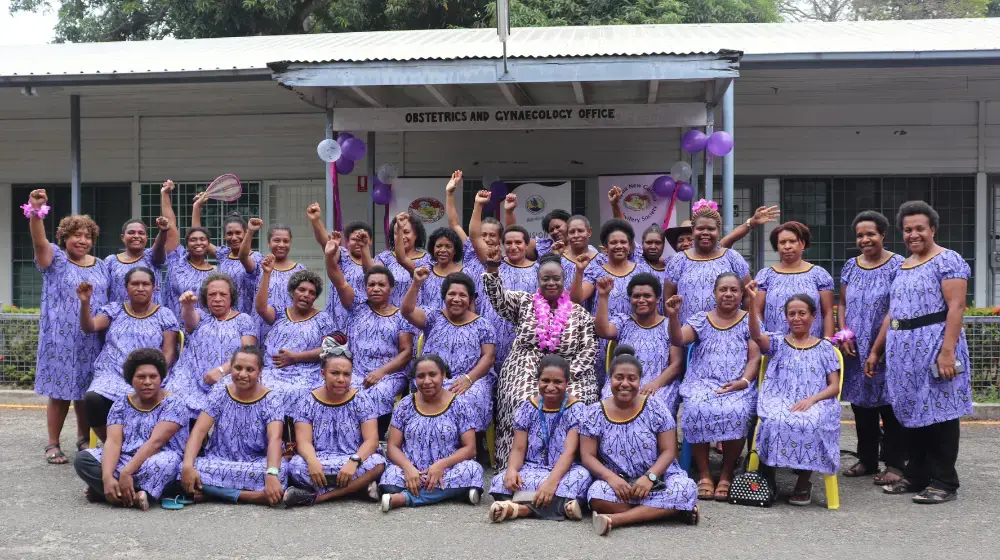“In Papua New Guinea, we have high maternal mortality rates and we need to reduce this,” says Helen Terea, a midwifery educator from the University of Papua New Guinea. “We need to break barriers and get safe delivery practices to our rural communities. This is why this training is so important. We learn new, updated information and technologies that we can share with our students.”
Ahead of the International Day of the Midwife, midwifery trainers joined UNFPA and NDOH for a refresher course on lifesaving obstetric care that also introduced them to a mobile application to make delivery safer for women and babies. The Safe Delivery App is a smartphone application that provides skilled birth attendants with direct and instant access to evidence-based and up-to-date clinical guidelines on Basic Emergency Obstetric and Neonatal Care. The app can be used offline and provides information on procedures, common drugs, and managing stages of labour. It provides an easy-to-use, hand-held guide for midwives and birth attendants in any stage of their career.
The use of the app helps PNG’s severely under-staffed midwifery workforce to respond to common complications during birth and maintain high levels of care for mothers and babies.
“For those who practice in rural areas, this app is very handy,” said Clerah Goveh, a midwifery educator from the University of Goroka. “They don’t need to take their standard treatment books and try to search for the information. With the Safe Delivery App they can follow, step-by-step, delivery procedures, safely and with respectful maternity care.”
This does not mean the current workforce is untrained. As Eva Tenanga from St. Mary’s School of nursing in East New Britain explains, if healthcare workers do not regularly have to respond to complicated deliveries, the knowledge can fade within a few months.
“There is a saying that if knowledge is not practiced, it fades within three months. Having this app will help midwives and clinical staff in the most remote areas of PNG to have access to knowledge there and then, when they need it. Having that app will help health workers to save the life of a mother and the unborn.
Clerah, Eva, Helen and their five fellow educators who joined this training, together with their students are critical to filling an urgent shortage of midwives in PNG. With only 677 midwives nationally, the workforce needs an extra 4,000 practitioners to meet the needs of the growing population. Without trained midwives, mothers and babies are at risk of dying from complications during childbirth which could otherwise be managed with basic medical interventions.
About the International Day of the Midwife
This year, the International Confederation of Midwives (ICM), which began as the International Midwives Union in Belgium, turns 100 years old. Since 2008, when the Global Midwifery Programme was established with ICM – which represents more than 1 million midwives worldwide – UNFPA has supported the work of midwives in more than 120 countries. Over this time, UNFPA and ICM have embraced emerging technologies to make pregnancy and birth a safer and respectful experience for midwives, women and their families.
The UNFPA, the ICM and the World Health Organization’s 2021 State of the World’s Midwifery report revealed that if governments invested in midwives, 4.3 million lives could be saved every year by 2035, a number that includes maternal deaths, neonatal deaths and stillbirths. This group of mostly women health care professionals could meet 90 per cent of reproductive health needs and prevent 65 percent of maternal and newborn deaths. Still, the world is facing a global shortage of 900,000 midwives.
Read more about PNG’s midwifery needs here: https://www.unfpa.org/sites/default/files/sowmy21/en/sowmy-2021-profile…;





